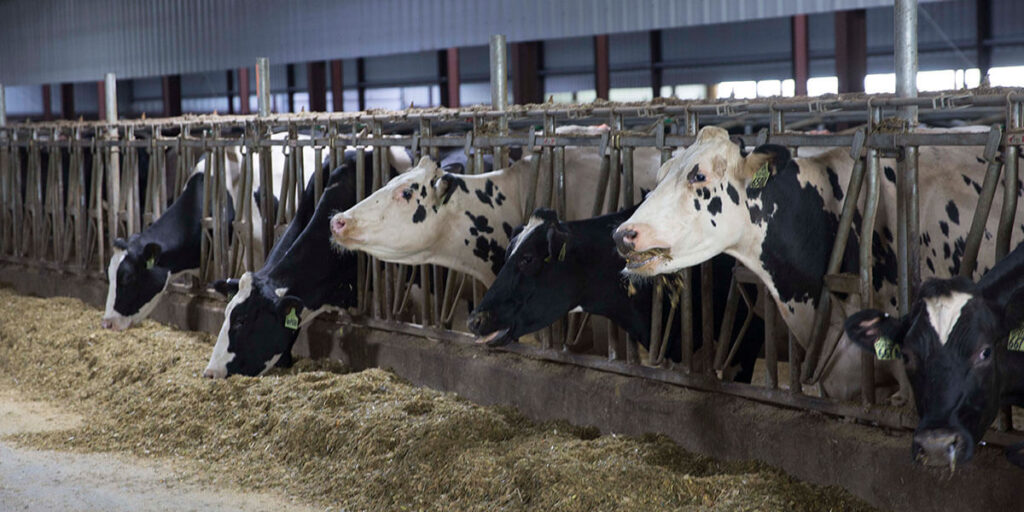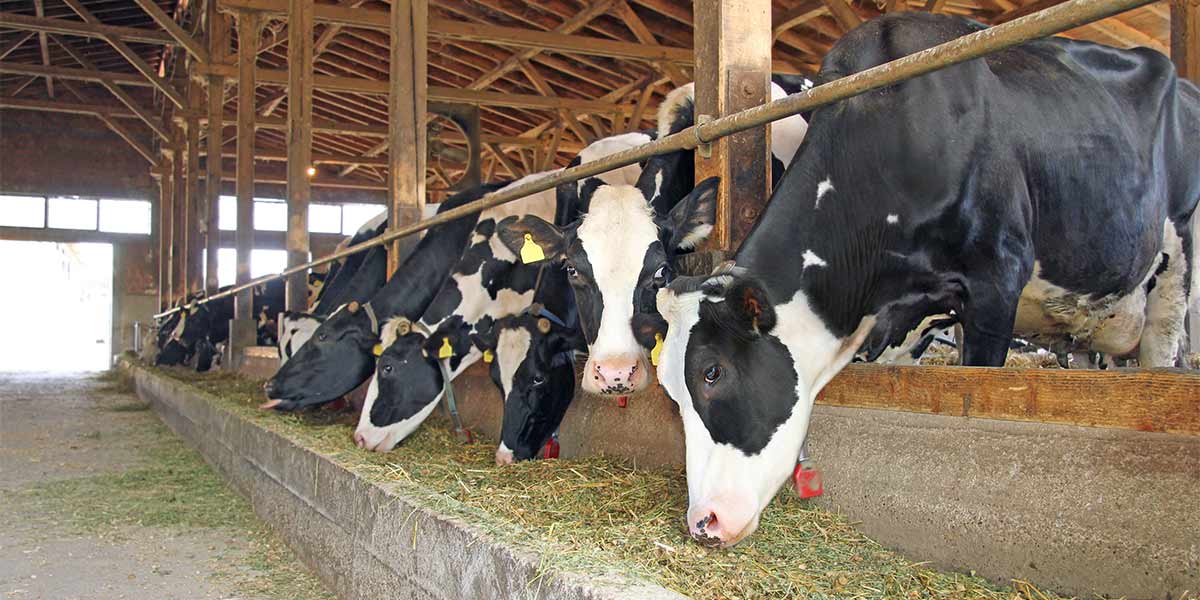As a dairy producer, one of the most important metrics you need to monitor is dairy feed efficiency – the ratio of milk produced to dry matter intake. It gives you a snapshot of your profitability by showing you how efficiently your cows are turning feed into milk.
We often think about feed efficiency in terms of diet formulation, and some of the nutrients and additives that we incorporate into the diet can certainly improve feed efficiency. However, to maximize the improvement, we need to take a broader approach. Many facets of management, including feed bunk management, cow comfort, heat abatement and employee management, can greatly affect dairy feed efficiency as well. Evaluating all these areas looks at what I call “systematic feed efficiency” because it looks at areas throughout the broader production system and identifies more opportunity for improvement. Your Zinpro representative can help you to identify your biggest roadblocks and develop a plan to correct them.
Consistent energy-corrected milk (ECM) production with less feed will help overall farm profitability. One potential but often overlooked benefit to improving systematic feed efficiency at the expense of dry matter intake is a decrease in manure production, which will further lower labor and removal costs on your dairy. If you are reducing dry matter intake, however, you must increase your systematic feed efficiency to ensure you’re still getting adequate milk production, or your profits could suffer.
In a previous blog post, we explained the importance of feed efficiency and how improving it can help you optimize milk production and improve your dairy profitability. Here, we will explore some practical examples of improving your profitability and reducing costs by improving feed efficiency. Let’s start by looking at two key metrics: Income over feed cost (IOFC) and manure production.
Improve Your Income Over Feed Cost by Increasing Feed Efficiency
One important metric that is impacted by systematic feed efficiency is your IOFC. To calculate your IOFC, you take the value of energy-corrected milk minus the cost of your feed. So let’s look at how improving your systematic feed efficiency can improve your IOFC. I recently visited some dairies, and these figures are based on conversations I had with those producers.

Here we show how increasing energy-corrected milk production while holding dry matter intake steady at 54 pounds per day can improve your IOFC. This assumes a feed cost of $7 per day and an energy-corrected milk price of $16 per hundredweight.
With these parameters in place, we can see that producing 80.5 pounds — a feed efficiency of 1.49 — of energy-corrected milk per day will result in an IOFC of $5.88. Improving feed efficiency by 4% to 1.55, however, would increase milk production to 83.7 pounds per day and your IOFC to $6.39. By increasing feed efficiency another 4% on top of that (to 1.61), we can increase milk production to 86.9 pounds per day, improving your IOFC to $6.90.
Achieving this level of improvement is possible; it takes time to make significant gains and will likely require improvements to be made in many areas of your farm. These changes may include ration formulation, forage quality, trimming schedule, footbath protocol, etc.
While IOFC is not a sure sign of dairy profitability, it serves as a quick metric that can help you monitor the relationship between money spent on feed and your efficiency in converting that to milk income.
Food for Thought: Improving Feed Efficiency Can Reduce Manure Handling Costs
Feed efficiency also impacts manure production. When your cows are producing large amounts of manure, you will spend more money on labor and equipment to remove it.
If you can improve your feed efficiency by reducing your cows’ dry matter intake while keeping energy-corrected milk production steady, you can reduce the amount of manure they are producing. This will have positive impacts on your labor costs and on the environment because of the decrease in nitrogen and phosphorus excretion.
Once again, I’ve demonstrated this with a simple table that shows how improving feed efficiency in this way can reduce your dairy’s manure production levels. In this scenario, however, we are maintaining milk production at 80 pounds per day while reducing dry matter intake.

With these parameters in place, we can see that 54 pounds of dry matter intake per day results in a feed efficiency of 1.49 and 162.7 pounds of manure produced per cow per day. This comes out to 5,940,128 pounds per 100 cows annually.
Reducing dry matter intake to 52 pounds per day and improving feed efficiency by 4%, to 1.55, results in an annual reduction of 191,990 pounds (96 tons) of manure per 100 cows. Increasing feed efficiency to 1.61 (another 4%) by reducing dry matter intake to 50 pounds per day results in an annual reduction of 383,980 pounds (192 tons) of manure per 100 cows.
Additionally, reducing DMI by 4% may have a positive impact on feed costs, furthering the cost-savings to your operation.
Reduce Your Labor and Increase Your Dairy Profitability
By increasing your IOFC and reducing manure production, you can improve revenue and cut costs to help the profitability of your operation. Starting with feed efficiency, you can work towards your goal of improving total farm efficiency.
Check out our previous blog on this topic featuring key products and solutions that will help you improve systematic feed efficiency on dairy operations.


